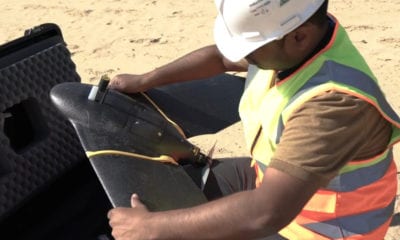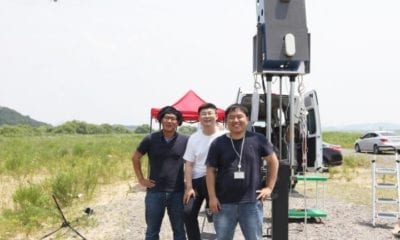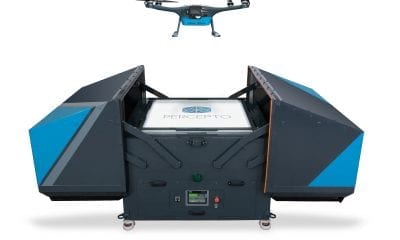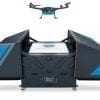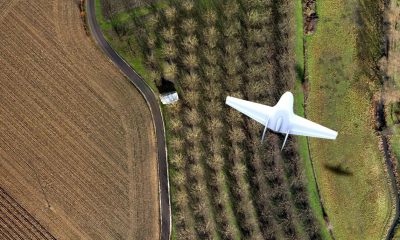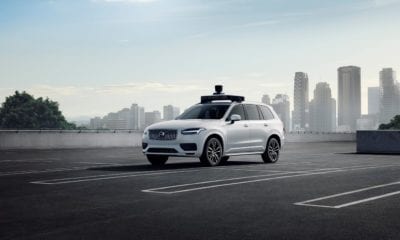AI, Autonomous Robocops from Motorola – What Could Go Wrong?
Mobile phone company Motorola has come up with an idea that it thinks is so good it’s worth patenting – a robotic cop.
It’s an idea that first entered popular culture in 1987 American cyberpunk action film ‘Robocop’ – but now, it seems the telecommunications giant wants to make it reality.
No longer just a concept found in science fiction movies and video games, they have now patented the idea, extending their Research and Development department to develop systems that would take over the particularly dangerous jobs of police officers.
In case you need a refresh – here’s the original Robocop trailer:
Thousands of bystanders and passengers have been killed in police car chases since the 80’s, and tens of thousands more were injured as officers repeatedly pursued drivers at high speeds and in hazardous conditions, often for minor infractions. Bystanders and passengers in chased cars account for nearly half of all people killed in police pursuits from 1979 through 2013, USA TODAY found.
With the rapid evolution in autonomous software, algorithms and artificial intelligence (A.I.), it was only a matter of time that these technologies were put to task.
And now it has happened – with engineers at Motorola granted a patent for, “A communication system, comprising: a self-driving vehicle within which to detain a detainee by a law enforcement officer”, that locks you up, administers a breathalyzer, reads you your rights, figures out who your counsel of record is, conferences you in with your lawyer, consults with a court on your bail, and lets you swipe your cards to bail out of the car.
Yes, Motorola’s patent includes not only a ‘robocop’ – but also a driverless police car.
In the self-driving police car, numerous interfaces would be available to the robotic cop, such as breath analysers, finger print scanners and metal detectors.
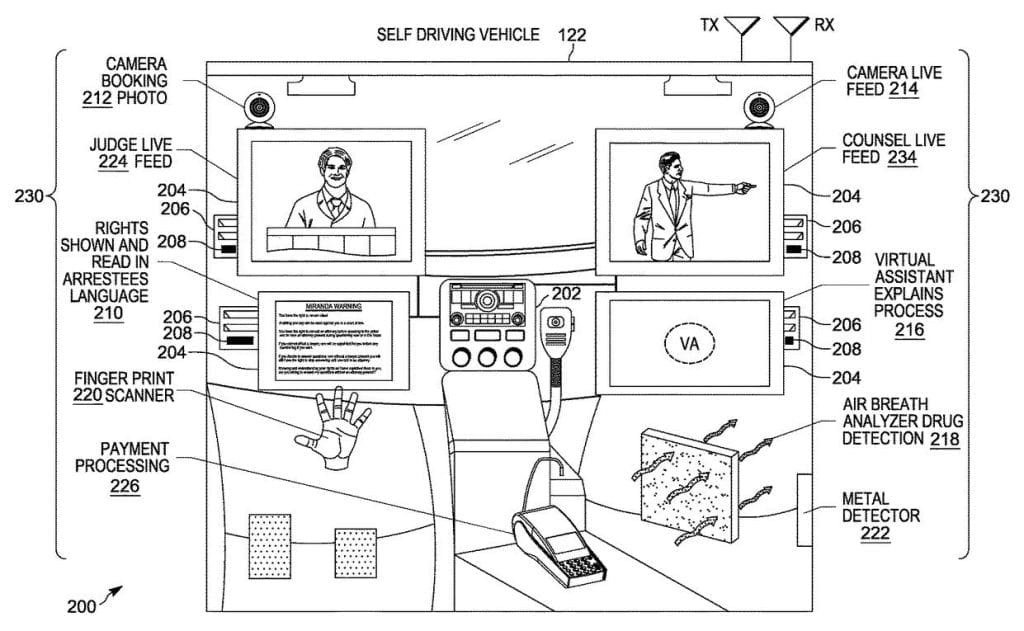
Another figure shows the robotic cop arresting a suspect and then placing the suspect into the vehicle for processing and transporting to the local authority.
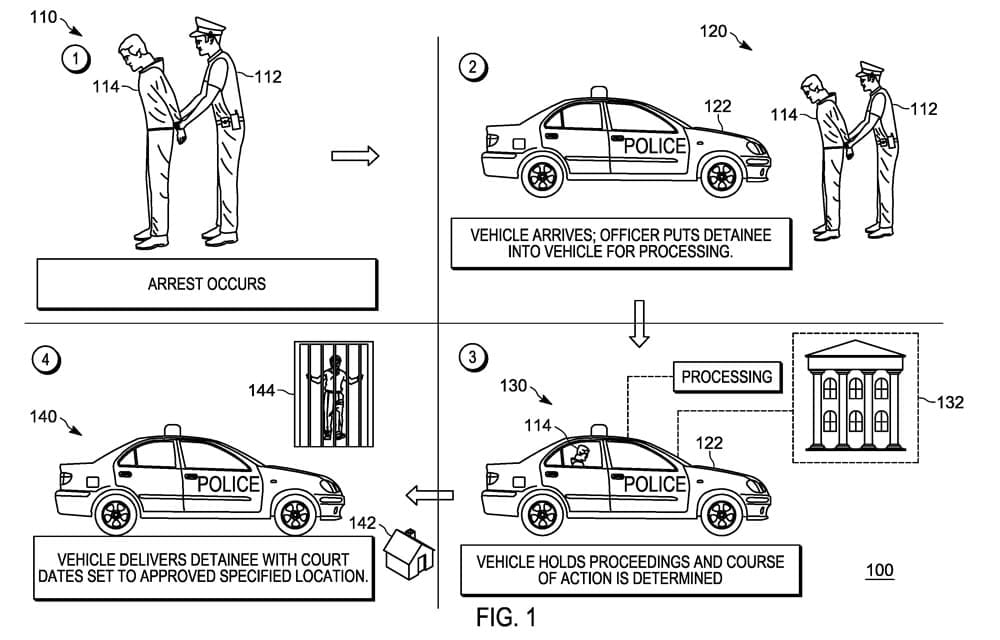
Inside the police car, the suspect is read their rights, fingerprints scanned, photos taken and other various functions, including linking the detainee to their lawyer.
Oddly, it appears that Motorola intend for some sort of preliminary hearing to be conducted inside the police car, with a judge also linked in and the ability for the detainee to pay bail – and be released – depending on the judge’s ruling.
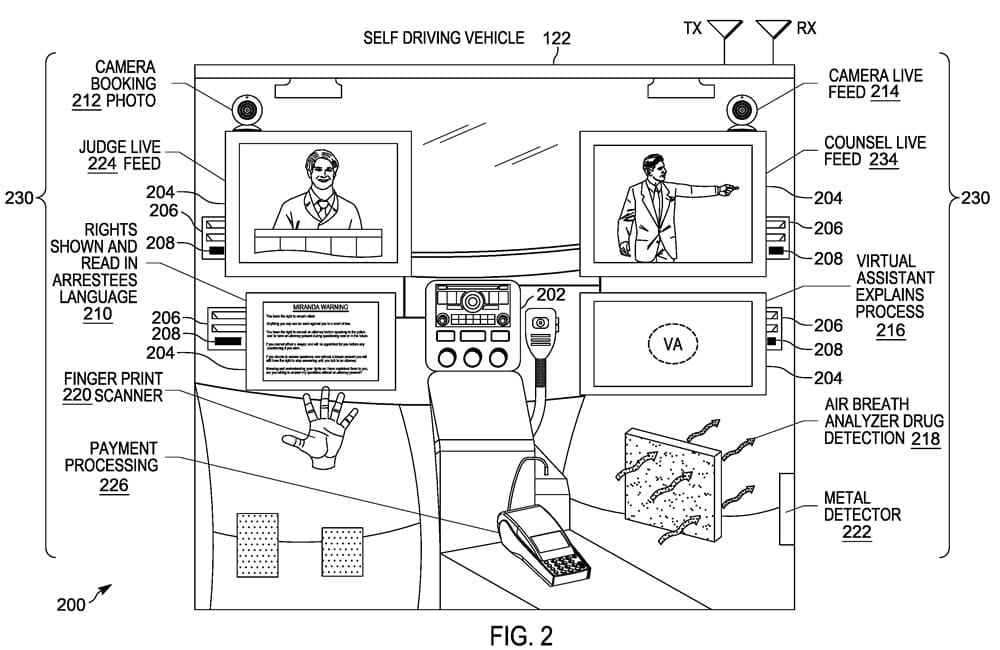
That is quite a lot of work for one autonomous police robot and its car – seriously, what could go wrong?
Here are some of the features and their respective functionalities:
- Different interfaces are installed in the car; that are programmed to work individually as well as communicate with each other. Each of them is used to acquire information from the detainee.
- An electronic processor located within the self-driving vehicle, the electronic processor programmed to receive the acquired input applicable to the detainee and the infraction, and the electronic processor enabling mobile law enforcement processes and proceedings via the plurality of interface devices located within the self-driving vehicle.
- A video camera continuously records the proceedings of a potential car chase and the proceedings of the arrest of the detainee. The video feed is processed by the electronic processor in real time.
- A breathalyzer is located within the self-driving vehicle for automatically measuring an alcohol level of the detainee.
- A finger print scanner is located within the self-driving vehicle for scanning fingerprints of the detainee and providing a police background check based on the scanned fingerprints.
- An automated payment processing device located within the self-driving vehicle for payment of fines or bail.
- The communication system, wherein the self-driving vehicle delivers the detainee to the approved location; a police station or to their home.
Apparently, as per the patent, there is a need for an improved approach to processing minor incidents or infractions in an efficient and expedient manner, although we suspect this particular idea may need a bit more thinking through.




